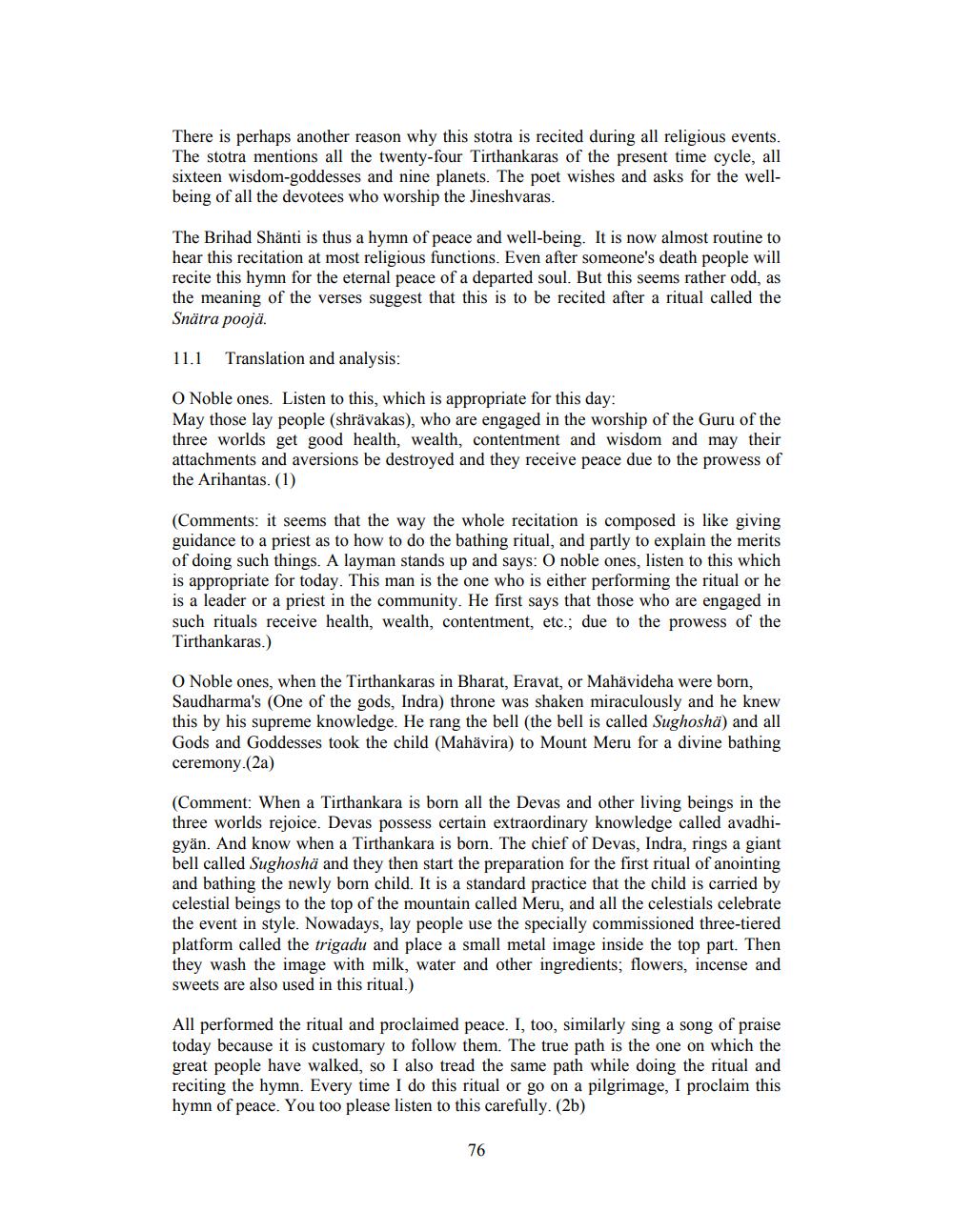________________
There is perhaps another reason why this stotra is recited during all religious events. The stotra mentions all the twenty-four Tirthankaras of the present time cycle, all sixteen wisdom-goddesses and nine planets. The poet wishes and asks for the wellbeing of all the devotees who worship the Jineshvaras.
The Brihad Shanti is thus a hymn of peace and well-being. It is now almost routine to hear this recitation at most religious functions. Even after someone's death people will recite this hymn for the eternal peace of a departed soul. But this seems rather odd, as the meaning of the verses suggest that this is to be recited after a ritual called the Snätra poojä.
11.1
Translation and analysis:
O Noble ones. Listen to this, which is appropriate for this day: May those lay people (shrävakas), who are engaged in the worship of the Guru of the three worlds get good health, wealth, contentment and wisdom and may their attachments and aversions be destroyed and they receive peace due to the prowess of the Arihantas. (1)
(Comments: it seems that the way the whole recitation is composed is like giving guidance to a priest as to how to do the bathing ritual, and partly to explain the merits of doing such things. A layman stands up and says: O noble ones, listen to this which is appropriate for today. This man is the one who is either performing the ritual or he is a leader or a priest in the community. He first says that those who are engaged in such rituals receive health, wealth, contentment, etc., due to the prowess of the Tirthankaras.)
O Noble ones, when the Tirthankaras in Bharat, Eravat, or Mahävideha were born, Saudharma's (One of the gods, Indra) throne was shaken miraculously and he knew this by his supreme knowledge. He rang the bell (the bell is called Sughoshä) and all Gods and Goddesses took the child (Mahävira) to Mount Meru for a divine bathing ceremony.(2a)
(Comment: When a Tirthankara is born all the Devas and other living beings in the three worlds rejoice. Devas possess certain extraordinary knowledge called avadhigyän. And know when a Tirthankara is born. The chief of Devas, Indra, rings a giant bell called Sughosha and they then start the preparation for the first ritual of anointing and bathing the newly born child. It is a standard practice that the child is carried by celestial beings to the top of the mountain called Meru, and all the celestials celebrate the event in style. Nowadays, lay people use the specially commissioned three-tiered platform called the trigadu and place a small metal image inside the top part. Then they wash the image with milk, water and other ingredients; flowers, incense and sweets are also used in this ritual.)
All performed the ritual and proclaimed peace. I, too, similarly sing a song of praise today because it is customary to follow them. The true path is the one on which the great people have walked, so I also tread the same path while doing the ritual and reciting the hymn. Every time I do this ritual or go on a pilgrimage, I proclaim this hymn of peace. You too please listen to this carefully. (2b)
76




